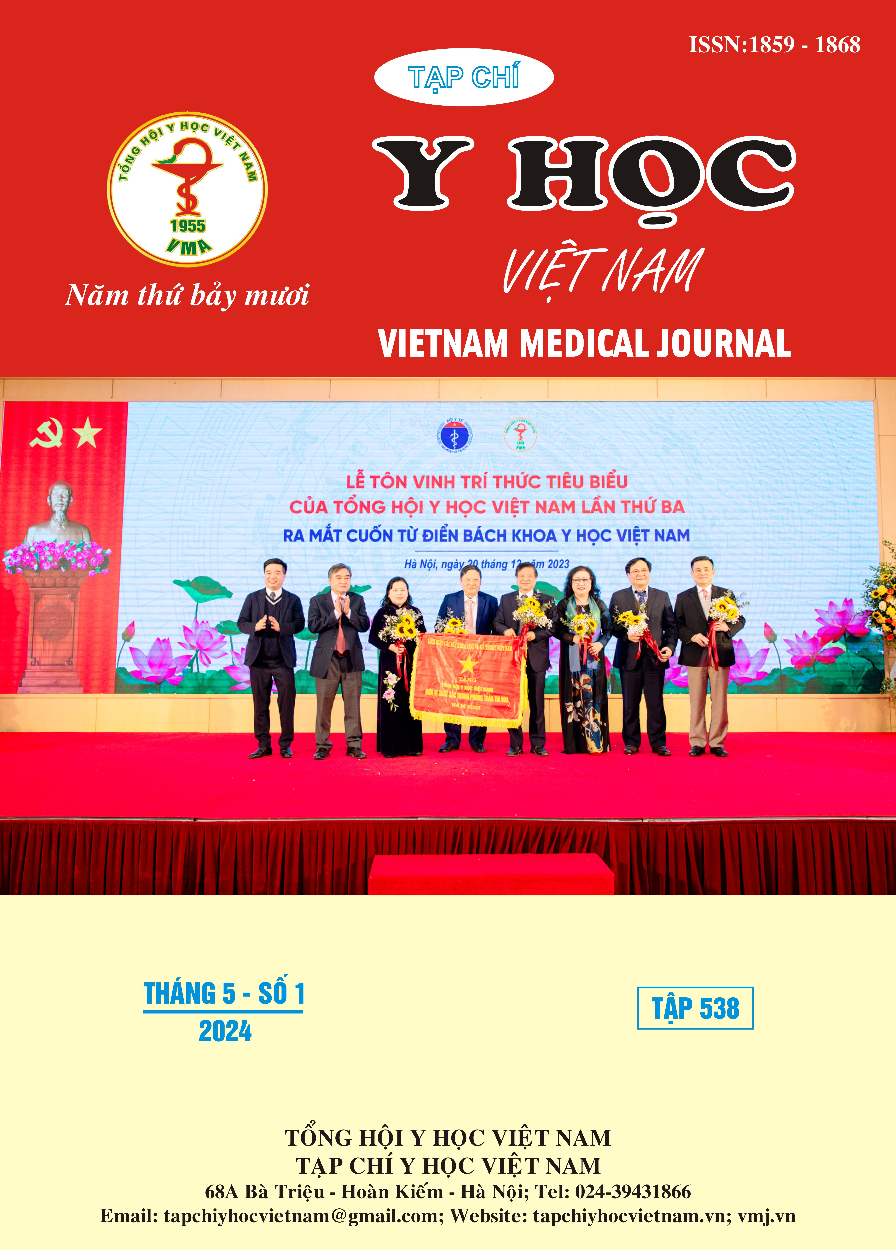FACTORS AFFECTING PRACTICES OF MOTHERS ON ACUTE RESPIRATORY INFECTION
Main Article Content
Abstract
Background: Acute respiratory infection (ARI) is the most common disease in children under 5 years of age. Identifying factors affecting the mother's KAP regarding ARI will help improve the effectiveness of maternal health education programs. Methods: The cross-sectional study was conducted by interviewing mothers using a standardized questionnaire. The questions were rated using 5 levels according to the Likert scale. The mothers who had been interviewed had children under 5 years old with acute respiratory infections and were recruited by convenient sampling during the study period (10/2020 – 9/2021). Results: A total of 172 mothers were included in the study. The mean age was 29.2 ± 5.41 years old. The total scores of knowledge, attitudes and practices of mothers about ARI were: 61.7 ± 9.6, 42.1 ± 4.1, and 34.8 ± 4.0, respectively. The factors that affect the mother's KAP were mother’s education level, mother’s occupation and family income (p<0.05). Factor probably influencing mother’s KAP was sources of information provided for mothers. Conclusion: In order to improve the effectiveness of health education programs aimed at mothers, it is necessary to pay attention to the factors that may affect the mother's KAP in caring for children under 5 years old with ARI such as mother’s education, mother’s occupation, family income, sources of information provided for mothers.
Article Details
Keywords
Knowledge attitudes practices, acute respiratory infections, children.
References
2. H. Nair et al., “Global and regional burden of hospital admissions for severe acute lower respiratory infections in young children in 2010: A systematic analysis” Lancet, vol. 381, no. 9875, pp. 1380–1390, 2013, doi: 10.1016/S0140-6736(12)61901-1.
3. K. Bhalla, A. Gupta, S. Nanda, S. Mehra, and S. Verma, “Parental knowledge and common practices regarding acute respiratory infections in children admitted in a hospital in rural setting” J. Fam. Med. Prim. Care, vol. 8, no. 9, pp. 2908–2911, 2019, doi: 10.4103/jfmpc.jfmpc_510_19.
4. Michela Sonego, Maria Chiara Pellegrin, Genevieve Becker, “Risk factors for mortality from acute lower respiratory infections (ALRI) in children under five years of age in low and middle-income countries” PLoS One, vol. 10, no. 1, pp. 1–17, 2015.
5. Rajesh Kumar, Anjum Hashmi, “Knowledge Attitude and Practice about Acute Respiratory Infection among the Mothers of Under Five Children Attending Civil Hospital Mithi Tharparkar Desert” Prim. Heal. Care Open Access, vol. 02, no. 1, pp. 1–3, 2012, doi: 10.4172/2167-1079. 1000108.
6. S. Q. Bham, F. Saeed, and M. A. Shah, “Knowledge, Attitude and Practice of mothers on acute respiratory infection in children under five years” Pakistan J. Med. Sci., vol. 32, no. 6, pp. 1557–1561, 2016, doi: 10.12669/pjms.326.10788.
7. V. K. Ramani, J. Pattankar, and S. K. Puttahonnappa, “Acute respiratory infections among under-five age group children at urban slums of Gulbarga city: A longitudinal study” Journal of Clinical and Diagnostic Research, vol. 10, no. 5. pp. LC08-LC13, 2016, doi: 10.7860/ JCDR/2016/15509.7779.


